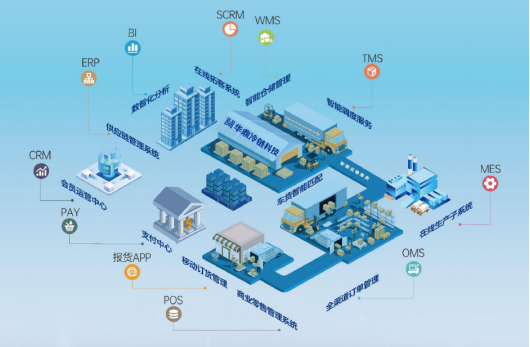Recently, two local standards developed by Henan Logistics Association, Huading Cold Chain Technology, and other organizations have been officially approved. The “Functional Requirements for Food Cold Chain Distribution Information Systems” and the “Guidelines for Building Temperature and Humidity Monitoring Platforms for Cold Chain Logistics” will be implemented in Zhengzhou starting January 11, 2025.
Local Standards to Ensure Full Traceability in Cold Chain Distribution
With the rapid growth of industries like fresh e-commerce and food service, the demand for cold chain logistics is rising. Establishing clear industry standards is crucial for enabling real-time monitoring throughout the cold chain, improving transparency, integrating warehouse and distribution management, enhancing operational efficiency, and reducing logistics costs.
The “Functional Requirements for Food Cold Chain Distribution Information Systems”, developed by Henan Logistics Association and Huading Cold Chain Technology, outlines the key functional modules and technical requirements for food cold chain information systems. These include:
- Order Processing
- Warehouse Management
- Distribution Management
- Capacity Management
- Temperature Monitoring
- Cargo Tracking
The standard applies to enterprises involved in food production, wholesale and retail, food service, and cold chain logistics, ensuring accurate and real-time traceability of food during cold chain distribution. This enhances food safety and efficiency, providing consumers with more reliable food security.
Temperature and Humidity Monitoring Standards to Safeguard Product Quality
The “Guidelines for Building Temperature and Humidity Monitoring Platforms for Cold Chain Logistics”, developed by Henan Logistics Association and Yiliu IoT Technology, focus on monitoring critical environmental factors—temperature and humidity—throughout the cold chain.
The guidelines specify:
- Platform Architecture Design
- Data Collection and Transmission Protocols
- Data Analysis and Alert Mechanisms
By establishing standardized monitoring platforms, companies can track environmental conditions in real-time, quickly detect and address anomalies, and minimize quality issues caused by temperature or humidity fluctuations. This reduces operational risks and strengthens the cold chain industry’s regulatory framework, ensuring sustainable development.
Driving Standardization and Industry Growth
The release and implementation of these two standards mark a significant step toward the standardization of cold chain logistics. They provide clear operational guidelines and technical support for enterprises, helping improve management practices, service quality, and resource optimization. This ultimately boosts the industry’s overall competitiveness.
To ensure smooth implementation, the Henan Logistics Association will focus on promoting awareness, providing technical training, and offering implementation guidance and supervision for critical technical aspects.
A Promising Future for Zhengzhou’s Cold Chain Logistics Industry
With these standards in place, Zhengzhou’s cold chain logistics sector is poised for significant growth. The new standards will pave the way for enhanced operational efficiency, better product quality, and broader industry development.
Optimize Your Cold Chain Operations with Zhengzhou’s New Standards—Ensuring Safety, Efficiency, and Growth in the Cold Chain Logistics Industry.
明年1月11日起,郑州市执行两项冷链物流新标准-中国质量新闻网
Post time: Nov-13-2024
